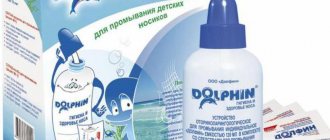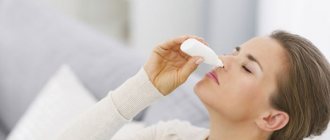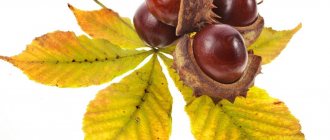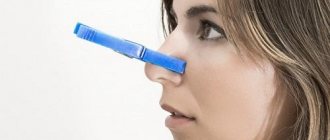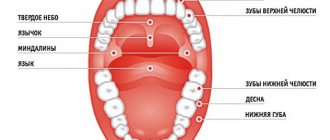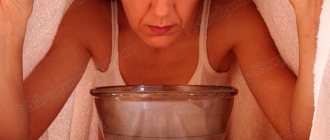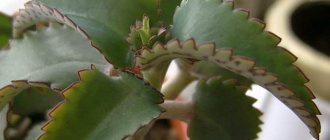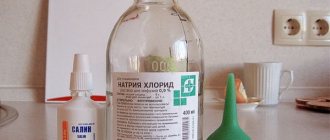Saline solution is actively used in all areas of modern medicine. It is used to treat wounds, for dehydration, intoxication and for diluting medications. Saline solution is especially often used to rinse the nose for sinusitis and other types of sinusitis.
First of all, let's figure it out: what is saline solution? Saline solution is a solution of sodium chloride, in other words, table salt. The solution is isotonic, that is, it fully corresponds to the osmotic pressure of the blood, therefore it is excreted from the body in the same amount as it is introduced. It is absolutely safe, so it can be used without prescription, for any conditions and at any age.
Saline solution for rinsing the nose can be easily purchased at any pharmacy, or you can make it yourself at home. To prepare it you need the following components:
- water, preferably boiled;
- salt. It can be iodized or marine;
- clean container.
In order not to harm your health, when preparing a sodium chloride solution, you must strictly adhere to the dose. The mixture is prepared at the rate of 10 g of salt per 1 liter of water.
Saline solution for an infant should be of a lower concentration. In one liter of water, preferably mineral, you need to dilute no more than 8 g of salt and add a pinch of soda. A solution with the addition of soda will perfectly soften the baby's nasal mucosa.
Indications for nasal rinsing
It is necessary to rinse your nose with the solution in the following cases:
- Various nasal diseases of infectious, bacterial and allergic origin. This procedure is aimed at removing pathological secretions - pus and mucus - that have stagnated in the nasal sinuses.
- Prevention of a number of diseases of the ENT organs. To ensure that the mucous membrane does not lose its protective function, it must be regularly moistened. Dried mucous membranes cannot protect the body from viruses and bacteria.
When do you need to rinse your nose?
Rinsing your nose with saline at home is useful for a number of reasons:
- moisturizing the nasal mucosa;
- elimination of pathogenic microflora;
- liquefaction of mucous accumulation;
- removal of formed crusts;
- relieving the inflammatory process;
- maintaining normal microflora of the nasal cavity.
Pediatricians recommend rinsing the child’s nose with saline and this is explained by the following:
- The child’s immune system is still at the stage of formation, so the child’s body is susceptible to attacks by pathogens. The drier the nasal mucosa, the more vulnerable it is to attack by infectious agents;
- Children are susceptible to allergens that can enter the body. Rinsing the nose removes not only dust, bacteria, but also allergens;
- Based on the physiology of the nasopharynx, children under one year old find it difficult to breathe through the nose. Rinsing your child's nose will help get rid of mucus buildup;
- sodium chloride helps not only with rhinitis and sinusitis, but also with the presence of adenoids.
Nasal rinsing is performed in the following cases:
- for therapeutic and prophylactic purposes for nasal diseases of various origins and allergic rhinitis;
- as a moisturizer for the mucous membrane in the autumn-winter period.
Just because saline solution is harmless does not mean that it can be used without consulting a doctor.
Methods for rinsing the nose
The procedure can be carried out in several ways; the washing technique depends on the age of the patient and the nature of the disease. Let's look at how to rinse your nose with saline correctly:
- using a rubber bulb. A small amount of solution is taken into the bulb and slowly injected one by one into each passage of the nose. In this way it is better to administer saline solution for a runny nose in children;
- flow method. The procedure is carried out using a teapot standing over the sink;
- using a syringe. The liquid is drawn into a syringe and injected into each channel;
- using a nebulizer. It is very convenient to administer saline solution for a runny nose.
The stream when injecting the solution should not be strong, since there is a risk of infection entering the paranasal sinuses or ear with the further development of inflammation.
Saline solution for rinsing the nose in adults should be at room temperature. For a runny nose, saline solution is used until clear liquid begins to ooze from the nasal passages.
How to rinse the nose with saline solution for an adult
Your doctor should tell you how many times you can do the procedure at home. The number of washes is determined based on the clinical picture and the severity of the disease. For thick discharge, wash out the mucus 2-3 times a day. A severe inflammatory process with mucus stagnation in the sinuses requires more frequent interventions.
Standard scheme
| Volume of saline solution (ml) | Number of procedures per day | Maximum course duration | |
| Treatment | 200 | Until 6 | 14 |
| Prevention | 1 | About 3 | 20 |
For sinusitis, antibiotics, immunostimulants, and mucolytics are additionally prescribed to thin the mucus.
Is it possible to rinse your nose with saline during pregnancy?
The drug does not cause side effects, therefore it has no contraindications. Individual intolerance to the components of the product is extremely rare. Saline solution for rinsing the nose during pregnancy at home is allowed. The only condition under which the nasal cavity cannot be washed is a tendency to bleeding. The mucous membrane is treated with a spray.
Saline solution is a universal drug for children and adults. Its action is aimed at restoring the mucous membrane, increasing protective functions, and destroying pathogens.
Nasal rinsing for babies
It is quite problematic to carry out the procedure for a small child; it is best to rinse the nose of children with saline using a pipette. Washing is carried out as follows:
- Lay the baby on his side.
- Pipette the saline solution.
- Insert the tip of the pipette not deeply into the upper nasal canal.
- Add sodium chloride solution until it starts to flow out.
- Repeat similar steps with the other channel.
As a result of this manipulation, the pathological secretion will begin to come out of the nasal passages, improving the patency of the canals and nasal breathing. If it is not possible to rinse your baby’s nose with saline solution, you can drop a few drops of the product into each canal and clean it with an aspirator or a flagellum.
Injecting saline solution into infants with a runny nose using a rubber bulb or syringe is strictly prohibited! The solution may get into the ear and cause inflammation. Before rinsing your baby’s nose with saline, make sure that the temperature of the sodium chloride solution does not exceed 20 degrees, otherwise laryngeal spasm may occur.
Rinse the nose with saline solution
There are several ways to cleanse your nose with this medicine at home:
- Method 1: using a special device that resembles a teapot with a narrow spout;
- Method 2: using a small rubber bulb;
- Method 3: using a syringe;
- Method 4: syringe.
You already know how to make a saline solution for rinsing your nose correctly at home. It is advisable to consider in detail the washing process itself, which should be done like this: tilt your head to the side over the sink, draw the mixture into a syringe, a special device or a rubber bulb, slowly pour the mixture into the upper nostril. An important condition that must be observed: the mouth must be open during the procedure, as liquid flows through it. If it is necessary for the solution to come out of the other nostril, the sound “and” is pronounced during infusions.
The process of rinsing the nose of children is slightly different. For the baby, saline solution should be instilled 3-4 drops into each nostril. The procedure can be repeated up to 5 times throughout the day. A child over 3 years old should rinse his nose using a syringe, a rubber bulb or a special device. In this case, his eyelashes should be closed, and his nostrils should be parallel to the floor. The rinsing process must be carried out carefully to avoid any damage to the nasopharynx.
Solution for inhalation
It is convenient to administer the saline solution in the form of inhalation using a nebulizer. As a rule, saline solution is administered to infants along with mucolytics. Mucolytic drugs are diluted with saline in a certain ratio specified in the instructions.
Saline solution for a runny nose in the form of inhalations can be used independently. Inhalations moisturize the mucous membrane and alleviate edematous-catarrhal symptoms. This procedure is carried out 3-4 times a day.
Very important! The saline solution used in the form of inhalations must be sterile.
Preparation
How to make saline solution for rinsing the nose? For these purposes, the product is prepared in this way: in 1 glass of water (pre-boil and cool until warm), you need to dissolve 1 tsp. table salt and a few drops of iodine.
Is it possible to prepare saline solution at home for children? In this case, you need to adhere to other proportions: ¼ or ½ tsp. table salt and one drop of iodine.
Sea salt is used similarly, only with 1 tablespoon of the substance accounting for 1 liter of liquid. If a small sediment is visible after complete dissolution, strain the medicine.
The resulting product should be used to rinse the nasal passages 2-3 times a day for 3-4 days . In addition, you can make saline solution according to another recipe: take ½ teaspoon of salt for 1 glass of water and soda on the tip of a knife.
Preparation of saline solution according to Komarovsky
A preparation such as saline can be easily prepared at home.
To prepare saline solution at home, Dr. Komarovsky recommends taking 1 liter of clean warm water, pre-boiled, and 1 teaspoon of table salt (without top).
These components should be mixed vigorously until the table salt is completely dissolved. If you do everything correctly and do not make a mistake in the ratio of water and salt, you will get the necessary 0.9% salt solution, suitable for rinsing the nose of people of any age.
Ready-made sterile saline solution is sold in any pharmacy for those who, for one reason or another, cannot prepare it at home . If we talk about the price, then this drug is very affordable, it will not cause serious financial expenses.
Sterile saline solution is best used in combination with other drugs intended for inhalation, since the quality of the resulting liquid must be high.
Nasal rinsing in children
Analogues of saline solution
Today there is a large selection of nasal preparations based on sodium chloride. The following drugs are widely used:
- Marimer;
- Aqualor;
- Physiometer;
- Otrivin;
- Dolphin;
- Salin.
Saline solution is an inexpensive, but no less effective alternative to expensive drugs. The above preparations are undoubtedly convenient to use, since they come with a dispenser or pipette and they are all sterile, but their volume is very small and does not last long.
How to make saline solution for a nebulizer at home
For bronchopulmonary diseases, inhalation procedures are an integral part of treatment.
Carried out using a nebulizer, they are more effective than standard inhalations over a container of hot water.
- If sputum discharge is impaired, mucolytic agents are used. These are mainly drugs based on ambroxol. Saline solution for inhalation with a nebulizer at home is mixed with those in a 1:1 ratio;
- For inflammation, herbal remedies are used. For example, “Rotokan” (1 ml per 40 ml of saline), tincture of eucalyptus or propolis (1:20);
- Antibacterial and antimicrobial drugs are prepared as follows: dioxidine injection solution 1% is diluted with saline solution (1:4); for 1 ml of alcohol infusion of chlorophyllipt you will need 10 ml of saline solution, and for a tablet of furatsilin 100 ml;
- In case of urgent need, for example, with swelling of the larynx or bronchospasm, saline solution is diluted with epinephrine according to the dosage recommended by the doctor.
Inhalations help with rhinitis, laryngitis, tonsillitis, bronchitis, pneumonia. With their help, bronchial asthma is prevented, as well as the incipient attack is stopped. Inhalations act locally, that is, there is no systemic effect on the body. For inhalation, you can use a wide variety of means and do not necessarily use a nebulizer.
Contraindications
Before rinsing your nose, you need to make sure that you will not cause additional harm to your health, since even such a simple and harmless procedure has a number of limitations, these include:
- Otitis.
- Cysts and other neoplasms in the nasal cavity.
- Bleeding.
- Excessive sensitivity to the components of the solution.
- Obstruction of the nasal passages.
- and other anatomical structural defects.
Despite the safety of sodium chloride solution, it is recommended to carry out the procedure in consultation with your doctor.
comments powered by HyperComments
Saline solution is a product that should be in every first aid kit. Rinsing the nose of an adult with it is a safe procedure that helps cure a runny nose, reduce discomfort from allergic rhinitis and avoid complications - sinusitis, vasomotor rhinitis, especially when taking medications is contraindicated. What about treating children?
Is it possible to rinse your nose with saline?
A solution of sodium chloride has antimicrobial properties, has a detrimental effect on bacteria, relieves inflammation, helps reduce swelling and dryness in the nasal cavity, and restores the microflora of the mucous membrane.
Nasal rinsing is prescribed for:
- chronic runny nose;
- colds, acute respiratory infections, acute respiratory viral infections, influenza during an epidemic;
- seasonal allergic rhinitis;
- sinusitis of various etiologies;
- contamination or dryness of the nasal mucosa;
- adenoids;
- fungal infections.
Nasal lavage is prescribed for adenoids and other diseases of the nasopharynx
An isotonic solution of sodium chloride will quickly and without side effects cleanse the internal cavity of the nose from accumulated dust and harmful microbes, moisturize and help get rid of dry crusts, and restore freedom of breathing.
When carrying out procedures, follow the basic rules:
- the temperature of the physiological agent should be within 38–40 °C;
- use boiled water and sterile equipment;
- after douching, do not go outside for 1 hour;
- control the pressure of the infused liquid - it should not be too strong;
- if there is swelling of the nasopharynx, take vasoconstrictors before the procedure;
- instill any nasal medications no earlier than 15 minutes after rinsing;
- Please consult your doctor first.
After several rinses, patients note positive results: breathing becomes easier, viscous mucus thins and is easily removed from the nasal passages. On the other hand, the strong secretion of liquid snot decreases, it thickens and can be easily blown out.
When used correctly, saline solution does not pose a risk to human health.
Is it possible to rinse a child’s nose with saline and why do it?
Saline solution is an aqueous solution of 0.9% sodium chloride, in other words, salt dissolved in water in an amount of 9 g per 1 liter. This ratio corresponds to the maximum extent to the salt level in the organs and tissues of the human body. This liquid does not contain any elements vital for us, but is isotonic and does not cause changes in the concentration of electrolytes in the blood.
Otolaryngologists strongly recommend using this remedy to treat the nasal passages for everyone, young and old. Is it possible to rinse a baby's nose with saline? And doctors do not make exceptions for them. Babies are recommended to perform this treatment as a preventive measure against viral infections and as a normal hygienic procedure for the delicate and painless removal of dried mucus crusts.
How to Make Saline Nasal Solution
The recipe for preparing a saline solution to clear mucus from the nose is simple; it requires adherence to clearly established proportions. If these proportions are not observed, the desired effectiveness of the procedure will not be achieved. So, how to prepare saline solution correctly? You will need one liter of warm boiled water and 1 teaspoon of table salt, which must be diluted until completely dissolved. The resulting liquid is recommended for use by both adults and children.
- Oven baked meat: recipes
- How to sew knitwear on a regular sewing machine
- How to smoke mackerel in a hot smoker correctly. Hot smoked mackerel recipes
A ready-made sterile solution is sold at the pharmacy for those who cannot, for one reason or another, prepare it at home. The price of the drug is quite affordable, so it will not cause large financial expenses. The sterile solution is best used in combination with other drugs, directly for inhalation. The quality of the liquid in this case should be high.
What problems can be solved by a simple procedure?
During a runny nose (including an allergic one), the mucous tissues of the nose and larynx swell and become covered with mucus, which accumulates and stagnates in the sinuses. This makes breathing difficult and aggravates the inflammatory process. Rinsing with a sodium chloride solution softens mucus, removes it from the nose and helps restore normal functioning of the nasal sinuses, while protecting the mucous membrane from the aggressive effects of microbes. A runny nose goes away faster. In addition, timely treatment, including this procedure, reduces the need for antibiotics and other medications.
When should you not rinse your nose?
Despite the fact that sodium chloride can be used even by pregnant, nursing women and newborns, in some situations rinsing procedures are strictly contraindicated:
- polyps, tumors in the nasal sinuses;
- frequent and severe nosebleeds;
- heart failure;
- pronounced purulent process in the sinuses, for example, a boil in the nose. In this case, any procedures can be performed only after consultation with an otolaryngologist;
- disorders of the kidneys (it is unacceptable for sodium chloride solution to enter the body in large quantities).
Saline solution and the procedure for rinsing the nose with it should not be taken as a panacea for all respiratory viral infections. This is just a good and effective additional technique to speed up recovery. For sinusitis, it is indicated to be used to prevent further spread of infection. It makes no sense to turn rinsing into the main method of treatment.
Saline solution for rinsing the nose at home
You can buy a ready-made product at the pharmacy, or you can make a saline solution for rinsing the nose yourself. This does not require any special skills or abilities, and the necessary ingredients are available in almost every home. So, how to prepare saline solution for rinsing the nose?
We will need the following:
- boiled water;
- sea salt;
- container for preparing the solution.
To improve the therapeutic effect, you can add a drop of iodine. It is important to follow the exact dosage, otherwise it can cause harm. For one liter of water, it is enough to take a teaspoon of salt. It is better to use warm water, the salt will dissolve better in it.
The concentration of saline solution for treating children should be much less. How much salt will you need to take? For a liter of water, it is enough to take a quarter teaspoon of salt, and to soften the mucous membrane we take baking soda. The prepared solution is drawn into a syringe and washed out the nose.
The method of rinsing the nose is selected individually
How to use saline solution correctly?
The procedure, as already mentioned, can be performed on any child - both younger and older. But it is important to follow age-specific precautions. So, for infants and children under 3 years of age, nasal rinsing is done as follows:
- Place the baby in front of you, slightly raise his head and instill 3 drops into each nostril using a regular pipette.
- Under no circumstances should you inject a solution into a small child’s nose under pressure using a syringe or syringe. This will create excess pressure and can cause inflammation of the inner ear - otitis media.
- A small cotton swab is soaked in oil and the mucus is carefully removed from the nose.
- The procedure is not recommended to be performed more than 3-4 times a day for colds or viral runny nose. As a preventive measure, it is performed no more than 1-2 times a week.
For children over 3 years old, the nose is treated as follows:
- The child should lean over the sink so that the sinus openings are approximately parallel to the floor. Or you can sit him on a stool and give him a small basin. At the same time, tilt his head so that his chin touches his neck.
- Next, the adult carefully, with low pressure, using a syringe or syringe without a needle, injects saline solution into the left or right nasal opening (approximately 100 ml). When all the liquid has flowed out from the opposite side, the actions are repeated from the other nostril.
- After the procedure, a girl or boy must blow his nose well.
Regardless of the child’s age, it is not recommended to rinse with sodium chloride more than 3-4 times a day for respiratory, viral infections and allergies. As a hygiene and preventative measure, the solution is used no more than 1-2 times a week. For purulent otitis, mucus from the nose is washed out with saline every 2 hours, alternating sodium chloride with herbal decoctions or antibacterial drugs.
Good day everyone)
I continue the “kindergarten theme”, which concerns many mothers. Wow, we’ve already tried so many medications, but we don’t want to inflate our wallet, especially for two children. And they get sick together...
What do doctors advise us to rinse a child’s nose with a runny nose? That's right: Aqualor for 3 hundred rubles or Aquamaris. But no one will tell you to buy sodium chloride for 20 rubles (at least in my experience). In the end, you learn everything from neighbors whose children are older and have lived through this period. And only when you tell the doctor that we are now rinsing our nose with saline, he nods and says, “Yes, yes, they can do that too.”
PLACE OF PURCHASE:
regular chain pharmacy (Maksavit)
PRICE:
22 rubles! Only!
There are 10 ampoules in a package.
PACKAGE:
a cardboard box, and in it, as it is written, there are more than 10 ampoules with saline solution, but now plastic ampoules. And they open with one movement of a finger. I read a lot that glass ampoules used to cause inconvenience.
The shelf life is long, so you can buy it for a long time.
What is sodium chloride
- Yes, regular table salt. Purified water is also added here.
Yes, you can prepare the solution yourself, but the price is so cheap that few people will do it, especially when two children are sick at once.
How they set us up were Aqualor and Aquamaris (in the photo AquaMaris for adults) - they screwed the base cap so that you couldn’t unscrew it. They're not fools. If everyone pours saline solution there, their sales will drop. This is such competition in the honey market. drugs. Everything is for profit and business, but not for people's health.
What to do then? What is the most convenient way to use saline solution to rinse a child’s nose:
We find honey from old stocks. bottles with a similar dispenser and thoroughly rinse the inside of the bottle. Then we pour several ampoules of sodium chloride into it and use it for our pleasure. In my case, I was only able to find Doctor Snoring spray)) But it gives a good pressure, the main thing is to close the child’s eyes so that salt does not suddenly get into them.
Instructions for sodium chloride:
In what order do I treat runny noses in children:
1. Blow your nose
2. I throw the child’s head back so that the water from the spray gets into the nose, and not into the eyes. I rinse each nasal passage. We blow our nose again.
3. We drop 1-2 nasal drops into each nasal passage (Nazivin, Derinat, Protorgol), but no more than 3 days with the same drops.
What other properties does sodium chloride have:
moisturizes the mucous membranes of the nasopharynx;
promotes the death of pathogenic microbes;
thins mucus in the nose;
restores microflora in the nasal cavity.
Thus, this solution has become a similar substitute for Aqualor and is just as helpful in fighting the runny nose when treating children.
Thank you for your attention, don't worry!
Saline solution is widely used in medical practice. It is available in dissolved form for injection, external use (rinsing cavities, mucous membranes), as well as inhalation.
Saline solution for rinsing the nose can be prescribed from birth, as it is absolutely safe. Its action is:
- moisturizing the mucous membrane;
- reducing tissue edema;
- normalization of mucosal nutrition;
- restoration of the functioning of the ciliated epithelium;
- cleansing the inner surface of the nose from accumulations of mucus, dust particles, allergens, chemicals;
- reducing mucus viscosity;
- softening dry crusts, which makes them easy to remove without damaging the tissue.
A few words about what saline solution is. Saline solution is an isotonic liquid, the composition of which is similar to most tissues and fluids in the body. The salt content in the solution is 9 g/l. Sodium chloride solution for a runny nose is used to rinse the nasal passages. It is well tolerated by the mucous membrane and can be used for medicinal and hygienic purposes.
Without fear, saline solution can be prescribed to pregnant women, during the lactation period, and also to infants.
Isotonic sodium chloride solution
Saline solution is a multifunctional drug widely used in all areas of medicine. It is table salt with high antibacterial and healing properties that help strengthen the immune system and have a beneficial effect on human health in general. The medicine is actively used for treating wounds, douching, and diluting medications. How to cure a runny nose at home quickly?
When you have a runny nose, the benefits of saline solution are invaluable. The liquid is excellent for both children and adults, can be used for the prevention and treatment of nasopharyngeal diseases during pregnancy, lactation, diabetes, and other diseases, has an affordable price and practically does not cause side effects. Saline solution is not prohibited from being used even when treating infants and newborns.
- Insulation of the floor in a wooden house from below
- Plates for teeth straightening
- Chicken thighs in the oven: recipe with photos
A 0.9% sodium chloride solution includes the following main components:
- table salt (NaCl);
- distilled water.
Their ratio in the preparation is as follows: for 9 grams of salt there is 1 liter of water. Analogs of saline solution are drugs such as:
- Aquamaster spray;
- Nazol aqua;
- Aquamaris,
- Aqualor;
- Rizosin;
- Salin;
- sea water.
The listed products are convenient, safe, sterile, have a small dosage, and are sold in bottles equipped with special pipettes or dispensers for convenient use. In terms of their therapeutic effect, they are completely identical to 0.9% sodium chloride solution. Their only drawback is their higher price.
The main advantages of saline solution for rinsing the nose:
- Economic benefit. Regardless of whether you buy a nasal rinse or prepare it yourself at home, its cost is the lowest compared to well-known analogues, which are sold in the form of sprays, drops, etc.
- Simplicity, ease of use. Rinsing the nose with a 0.9% sodium chloride solution is simple and quick, the procedure does not cause discomfort in either a child or an adult, the liquid does not irritate the nasal mucosa, it is recommended to use it for inhalation - this is another significant plus for versatility.
- Possibility of use for treatment and prevention. Saline solution for rinsing the nose is relevant during epidemiological outbreaks of influenza and other viral diseases. The product not only neutralizes the action of bacteria, but also prevents their reproduction.
- Highly effective method for treating and relieving runny nose in patients of different age groups. After the procedure, the nose of both the baby and the adult breathes normally.
- Ease of preparation. To make a nasal rinse solution at home, you do not need to have a medical education.
Contraindications for the use of saline solution for rinsing the nose:
- renal dysfunction;
- cardiovascular failure;
- high or low blood pressure;
- individual intolerance to table salt.
Indications
Sodium chloride nasal solution is used:
- to prevent the development of allergies due to hay fever. Regular rinsing of the nasal passages during the flowering period is necessary to remove allergens from the nose;
- to moisturize the inner surface of the nose. If the room has dry air (humidity below 40%), nasal breathing becomes difficult, tissue swelling and dry crusts may appear, which reduce the lumen of the passages. It is especially important to maintain mucosal moisture during the heating season when using air conditioning;
- to cleanse the mucous membrane. When staying in a room with dusty air for a long time, the mucus becomes more viscous, tissues lose their protective properties, and therefore the risk of infection increases;
- to remove large amounts of mucus during a runny nose, which makes nasal breathing easier;
- to prevent exacerbation of chronic infectious diseases of the nasopharynx (adenoiditis, sinusitis);
- for the prevention of colds, acute respiratory viral infections by maintaining a sufficient level of mucosal protection.
Washing procedure
You can prepare a sodium chloride solution yourself. To do this you need 9 g of salt, 1 liter of boiled warm water. After thoroughly dissolving the ingredient, it can be used to treat rhinitis to rinse the nasal passages.
This product is non-sterile and can only be used externally.
Now let's look at several ways to rinse your nose with saline solution when you have a runny nose:
The liquid should enter the nasal passages under slight pressure or gravity. Retracting the nostril solution is not recommended.
How to prepare saline solution
It is worth noting that most of the nasal rinsing medications are based on saline solution. However, prices for various medicines can be completely different, but sometimes reach quite a considerable cost.
Such prices, of course, are too high, given the fact that the solution itself is very inexpensive . Let's look at two ways to prepare and use the solution at home. Method one for preparing saline solution:
For preparation you will need the following components:
- water;
- salt.
By the way, saline solution can not only help with a runny nose, it can also be used as an inhaler for various respiratory diseases, for throat diseases as a composition for rinsing the mouth and throat, and it is permissible to wash small scratches and wounds with saline solution.
Despite all the usefulness of this solution, it is not difficult to make. Its manufacture requires a minimum amount of effort and cost. To prepare filtered or bottled water, it will be enough if you heat it to a temperature of about thirty-seven or forty degrees.
As for unfiltered water or tap water, before you start making the solution, the water must be boiled and then cooled to a temperature close to the temperature of the human body.
Features of preparation, storage and use
To prepare the solution, it is best to use the first grind of salt, since it dissolves quickly and without residue in water.
So, to prepare a saline solution, one teaspoon or approximately half a tablespoon of salt is enough, which is slowly poured into previously prepared water (there should be about 1 liter of water).
You need to constantly stir the resulting liquid until the salt is completely dissolved. The result is a salty solution, which, in fact, can already be used for treatment.
The saline solution should be stored at normal home temperature , however, do not forget that it must be used within the first 24 hours from the moment of preparation, otherwise its properties are lost and the level of contamination increases, since it is almost impossible to maintain sterility at home.
Using such liquid will not only not help you recover, but may well be harmful to your health. It is best to simply get rid of the stale solution and make a new one, especially since its production is not a labor-intensive process.
Second cooking method
By saline solution we mean sodium chloride or NaCl. It is used to treat intoxication and dehydration of the body. It is also an excellent tool for emergency resuscitation and washing of contact lenses.
Saline is an isosmotic , which is widely used for diluting various injectable drugs and as an inhaler. The lack of this substance in the human body can have a negative effect on a person.
Solution composition:
- Salts of various types.
- Distilled water.
- Glucose.
This mixture can be easily made at home. We assume that saline solution is a mixture of water and salt , which should be 0.9%. Therefore, you can make it yourself, and all you need is salt, several types, and water.
Each type of salt is introduced into the solution separately after the previous salt has completely dissolved. To prevent sediment from forming at the bottom of the liquid container, you need to pass CO 2 (carbon dioxide) through it. Just before you start using the saline solution, you need to add the final ingredient - glucose.
It must be taken into account that only well-purified water . It is very important that the solution be prepared exclusively in a glass container, this is due to the fact that studies have shown the negative impact of metal on the vital processes of tissues.
Features of the procedure
Is it possible to rinse the nose with saline solution for a runny nose in childhood? The procedure has some peculiarities. Compliance with them will allow you to get the maximum effect from rinsing and prevent complications:
- the procedure is carried out one hour before or two hours after meals;
- saline solution for a runny nose will only help if it is used warm. A hot solution can burn the nasopharyngeal mucosa, and a cold solution can aggravate rhinitis due to tissue irritation;
- after washing, it is not recommended to go outside in the cold season for an hour;
- if the child does not know how to blow his nose, it is necessary to use an aspirator;
- The syringe can be used starting from the age of six. The use of aerosols at a young age risks liquid entering the ear cavity through the short auditory tube.
Rinsing the nose with saline is carried out using a Neti-pot or Dolphin device. They are a container with a teapot-shaped spout.
If the procedure is prescribed for a baby, the use of such devices is prohibited. The fact is that the mucous membrane of the nasal passages in infants is very delicate, so the risk of injury is high. Treatment of a runny nose with saline is carried out as follows:
- using a pipette, drop one or two drops of the solution into each nostril;
- wait a minute, which is necessary to soften the dry crusts;
- Use a cotton swab to carefully remove the liquid with mucus.
If a newborn has rhinorrhea, it is recommended to use a special aspirator to remove large amounts of mucus. They can be of several types:
- electronic. To work, just insert the tip into the nasal passage and turn on the device;
- vacuum. It is characterized by high cost. Due to the noise of the operating device, the baby may become restless, which is undesirable for the procedure. Possible tissue trauma may be due to increased motor activity of the newborn;
- mechanical. It looks like a tube, one end of which is inserted into the baby’s nasal passage, the other is wrapped around the lips of one of the parents. When the latter is inhaled, the mucus slowly begins to move through the tube and accumulates in the flask. The disadvantage of such an aspirator is the high risk of infection of parents by inhaling viruses.
A home-prepared medicine may have a high concentration of salt, which can increase tissue swelling and nasal congestion.
The drug can be used up to five times a day (for a runny nose), once a day - for hygiene. The duration of the therapeutic course is 2 weeks. If it is necessary to continue rinsing the nasal passages, the course is repeated after 2 weeks.
This is necessary to restore the physiological composition of the nasopharyngeal flora.
Despite the absence of contraindications and adverse reactions, saline solution, if the duration of the course is exceeded, can change the quantitative composition of the microflora in the nasal passages.
How to properly rinse the nose of a child under one year old?
In the first months of age, the main requirements for the procedure are sterility and safety.
All instruments must be boiled before use.
The baby's immune system is too weak to provide full protection against infections.
If the baby screams and resists, it is better to postpone rinsing, since in this case it is easy to injure the mucous membrane.
For the procedure you will need:
- sterile cotton wool;
- Vaseline oil;
- pipette;
- aspirator.
The use of aerosol spray products in newborns may cause damage to the nasal mucosa. There is also a high risk of fluid reflux into the middle ear.
Nasal rinsing technique:
- Place the baby on the changing table.
- Clean the nasal cavity using cotton swabs.
- Turn your head to the side.
- Place 2-3 drops of saline solution into the upper nostril.
- Wait a few minutes.
- Raise the baby's head to allow excess fluid to drain out.
- Repeat rinsing for the second nostril.
- clean the contents of the nasal cavity using an aspirator.
Excessive enthusiasm for the procedure can lead to drying out and thinning of the mucous membrane.
We must not forget that with frequent rinsing, not only pathological, but also normal microflora is removed from the nasal cavity.
The body is deprived of its natural defenses. How often should you rinse your nose?
| Healthy children: | If nasal breathing is impaired due to dried secretions up to 3 times a day. |
| For infectious or allergic rhinitis: | 3 times a day. |
| If there is dry air in the room where the child is: | One daily hygiene procedure. |
| To prevent viral diseases during a seasonal epidemic: | 2-3 times a day (after a walk and suspicious contacts) |
Useful solutions
Not only saline solution helps cure rhinitis. Antiseptic, herbal, and anti-inflammatory agents can be used to rinse the nasopharynx. To make breathing easier, rinse your nose:
- herbal decoctions, infusions. Chamomile, sage, coltsfoot, yarrow, and oak bark have a mild anti-inflammatory, decongestant, and regenerating effect. To prepare the medicine, simply pour 15 g of herb into 280 ml of boiling water, cover with a lid, and wait 20 minutes. After cooling, the infusion should be filtered and used for rinsing. Many herbs can be used for this purpose, but do not forget about the risk of an allergic reaction;
- Aqualor, Aqua Maris, Morenazal, Humer, which are produced in the form of aerosols and drops. The bottles have different attachments, which allows you to choose a drug for any age;
- Furacilin, Miramistin, Chlorophyllipt, Dioxidin. The listed solutions have powerful antiseptic properties, thanks to which it is possible to quickly overcome microbes and sanitize the infectious focus. Before use, you should study the instructions, as some drugs require dilution. Miramistin can be used for prophylactic purposes during an epidemic to reduce the risk of infection. The medicine is used to rinse the nasopharynx after severe hypothermia and communication with a person suffering from a viral pathology.
Before you start washing, you need to take into account possible contraindications. These include nasal bleeding, disruption of the integrity of nasal tissue, as well as individual intolerance to drug components.

